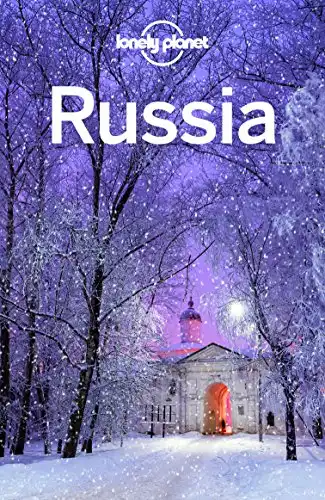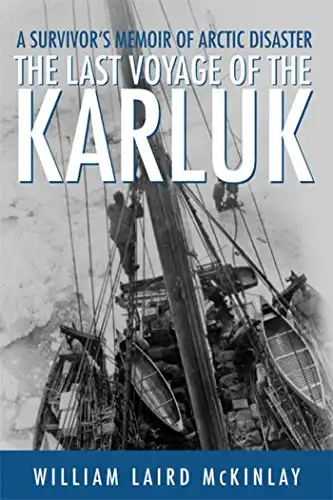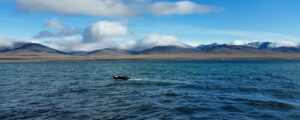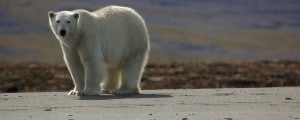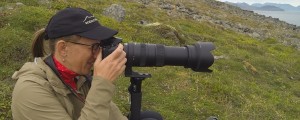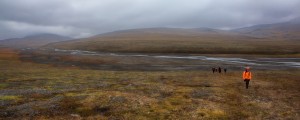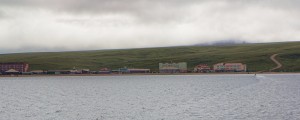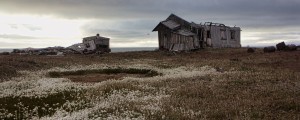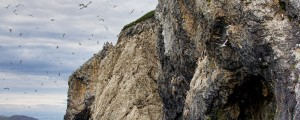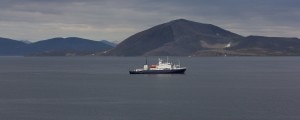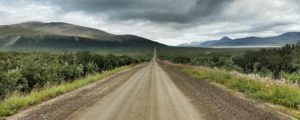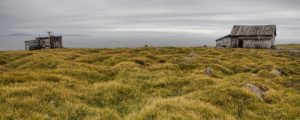One small step for man and one giant step for mankind is what danced in my head as I set foot on the Wrangel Island tundra and the earth beneath me moved. It was like walking on a sponge, soft and light; almost delicate feeling. However, the tundra was anything but delicate. I had just set foot on an island that only a few hundred people had ever seen or walked on. A visit to Wrangel Island is truly a unique once-in-a-lifetime experience.
The island gained UNESCO World Nature Heritage Status in 2004. It was the first Arctic object on the UNESCO list. It was chosen as an outstanding example of the evolutionary development of the arctic landscape and ecosystem diversity on the Earth.
Since few people know of the island, and I’m writing extensively about my travels there, I thought I’d give you a crash course on everything you need to know about Wrangel Island.
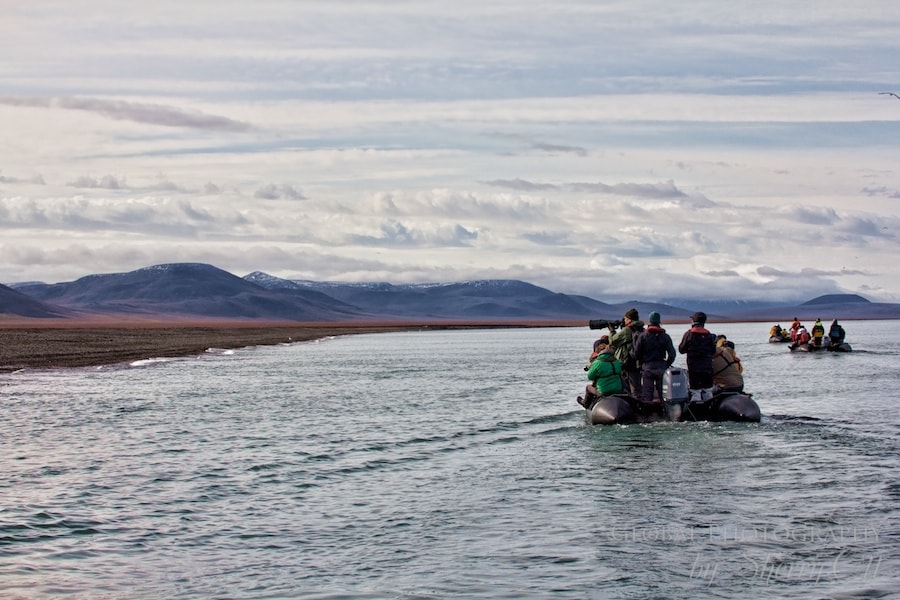
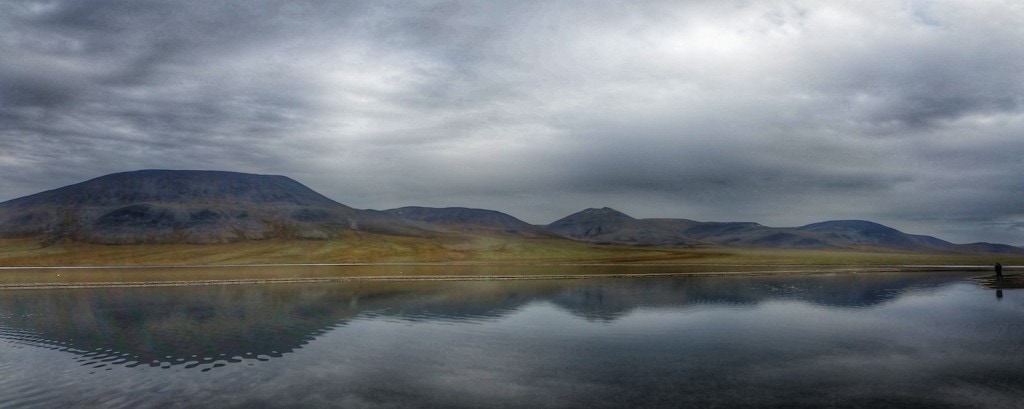
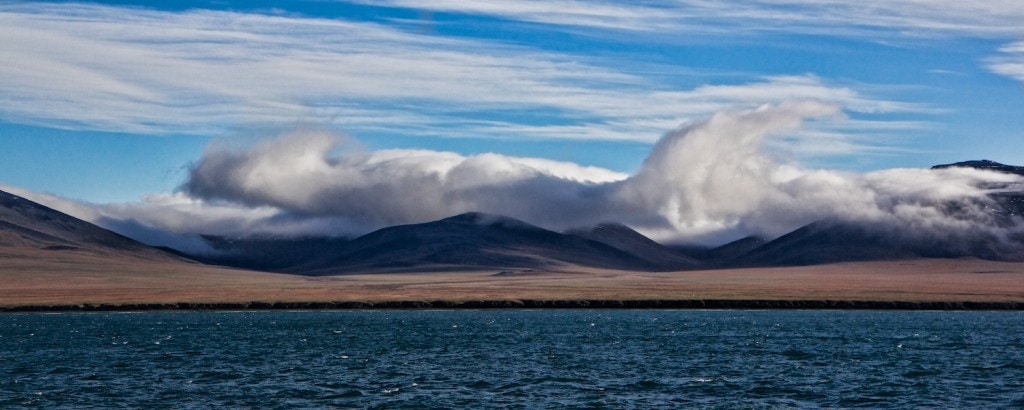
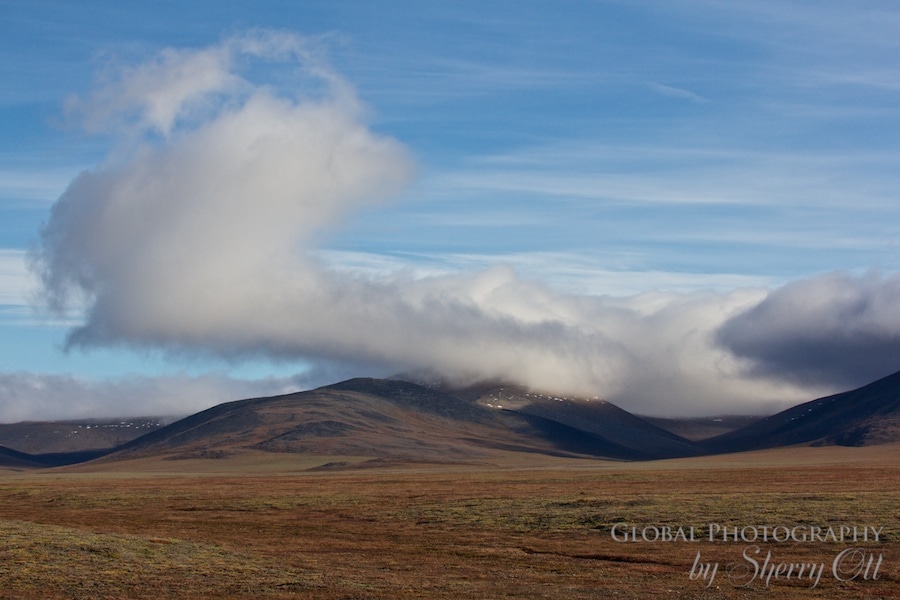
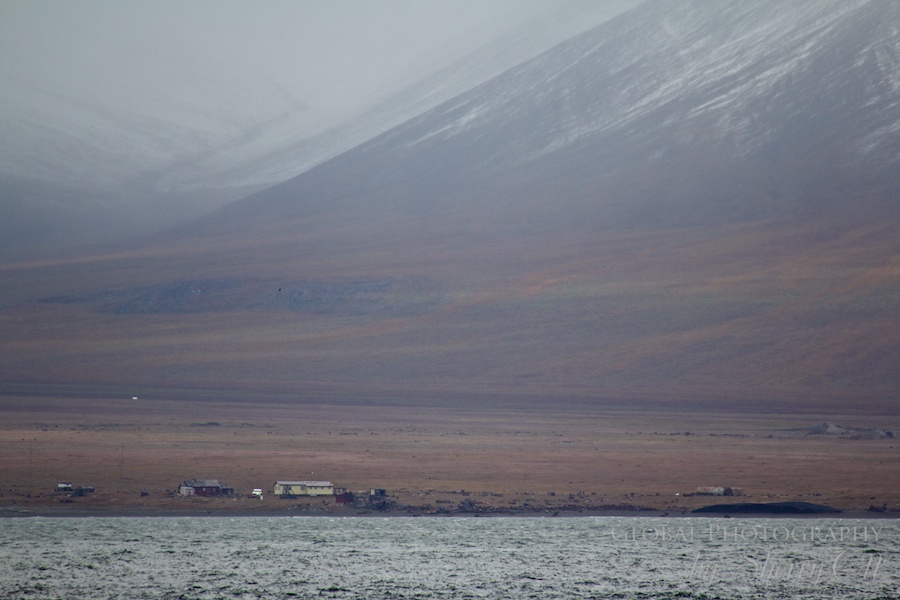
Where is Wrangel Island
Where is Wrangel Island located? Wrangel Island is a part of Russia’s Far East. It sits above the Arctic Circle about 87 miles north of Russia. It is home to an extraordinary amount of animal and plant diversity, the greatest in the high Arctic. And the best part is that it’s relatively unknown.
Wrangel Island Map
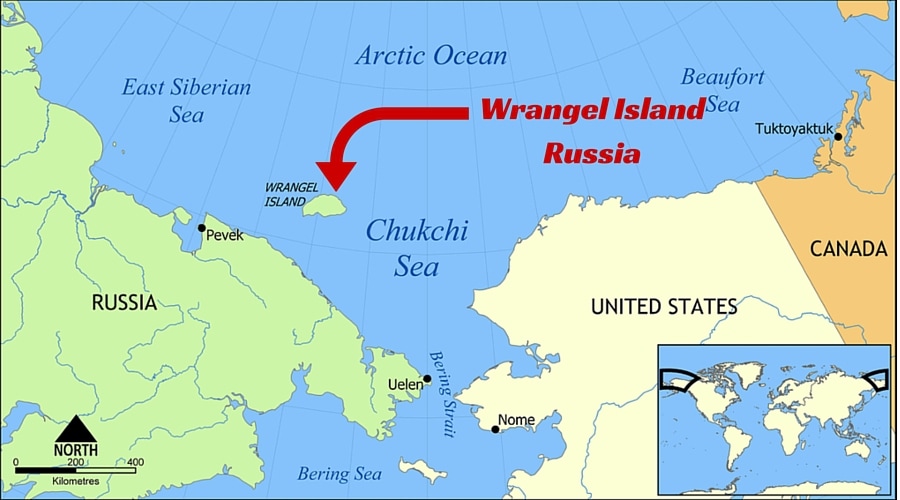
How to Get to Wrangel Island
This is the hard part. You need a special permit to be able to visit the island granted by the Russian authorities. This is not an easy process unless you know someone. The only real way to get there is by expedition ship. Sail across the Bering Strait from Alaska to Russia – a journey few people get to take. Heritage Expeditions (whom I traveled with) operate several Wrangel Island Tours (in July and August) which include visits along the stunning Chukotka Coast.
There are other small expedition ships that are starting to make this journey now too – however, Heritage was the first – and they have an understanding of the area like no other company has.
One of the only other ways to get to the island is to somehow get a ride with a working Russian ship in the area – and that is practically impossible!
Check out my winter packing list for extreme temperatures
Wrangel Island History
Wrangel Island’s early history is full of failed expeditions, shipwrecks, and strife giving way to the modern-day history full of political collisions and big oil business.
The discovery of Wrangel Island wasn’t easy. Lieutenant Ferdinand Petrovich tried to ‘discover’ the mythical island in 1821, 1822, and 1823 by making sled journeys over the sea ice to the northwest, north, and northeast of Kolyma River searching for the unknown land. On his last expedition, he was only 15 miles away from the coast but he didn’t see the island.
- 1867: Whaler Captain Thomas Long was the first European who undisputedly sighted and landed on Wrangel Island.
- 1911: Russian icebreakers, Taimyr and Vaygach, conducted a land and ocean survey including Wrangel Island. They also claimed the island for Russia at that time.
- 1914: The famed and fraught voyage of the Karluk occurred.
- 1921 – 1923: An attempt at illegal colonization of Wrangel Island was initiated by Vilhjamur Stefansson. The colony consisted of 4 men and one woman, Ada Blackjack. Ada was the only one who survived all by herself and was rescued in 1923. Her story is really amazing…and it’s really unique to hear the story of a female explorer for once!
A True Story of Survival in the Arctic
- 1926: The Soviet permanent settlement was established on the island by Arctic explorer, Georgiy Ushakov. In the initial years, the settlement was really only about hunting and surviving. It then evolved through many other periods after initial colonization; industrial development, militarization, and strict ecological conservation from 1976 to the present.
- 1996: The Ushakov village was removed and relocated to the mainland.
- 2000: The border guard station was removed.
- 2014: The Russian Navy announced plans to establish a base on the island
- Present Day: A Russian ranger station is inhabited by a few rangers
Sadly all of these various settlements left an immense amount of debris and abandoned buildings strewn throughout the island that will probably never get removed or picked up.
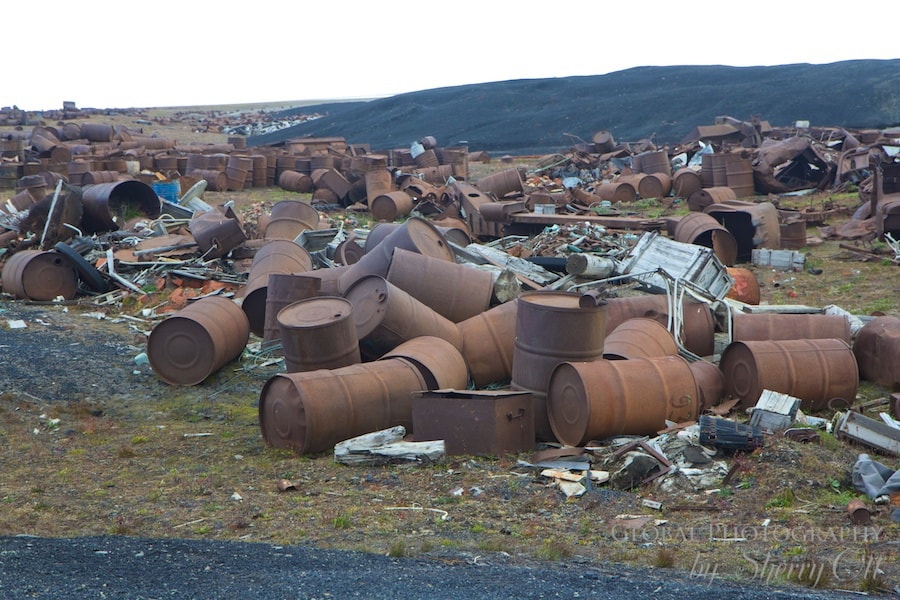
Wrangel Island Mammoths
The island was home to the last Wooly Mammoths to ever walk the earth. Bone and fossil discoveries show that mammoths persisted there until as recently as 3,700 years ago, taking refuge on the island in a watery, warmer post-Ice Age world. The woolly mammoths who lingered on the island, a site without land predators but also with limited food supplies, evolved over time into dwarfs, a little over half the size of their Ice Age ancestors. They finally disappeared from the island, and the earth, at roughly the same time that humans are believed to have arrived.
However, you can still see a few remnants of the Wooly Mammoths lying around the landscape. It’s pretty crazy to look at this tusk and know that it actually belonged to a mammoth!
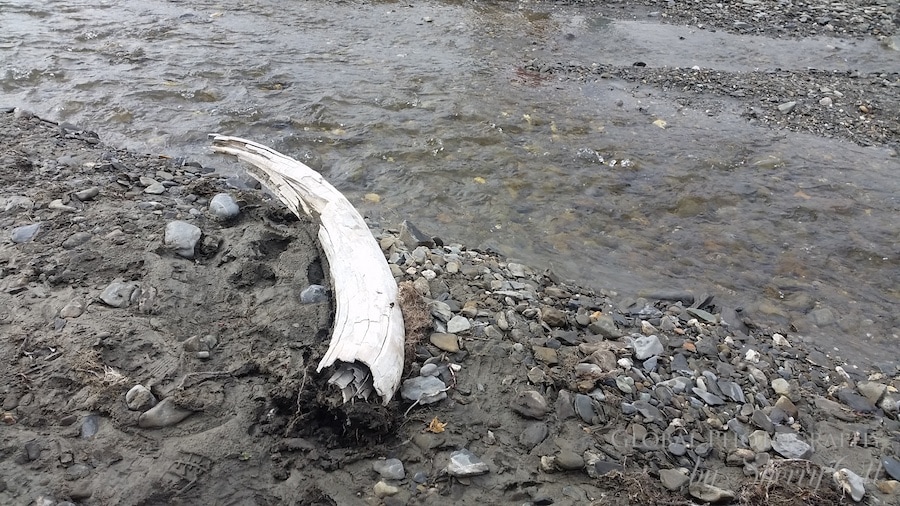
Wrangel Island Wildlife
The island is home to an immense amount of unique wildlife. It’s referred to as the Polar Bear Maternity Ward because it has the largest density of denning of polar bears anywhere in the world, averaging between 300-350 maternity dens each year on the island, and even more on Herald Island. While I was there, the polar ice had just receded and the bears had come ashore now for a few months. They were all getting used to their new surroundings.
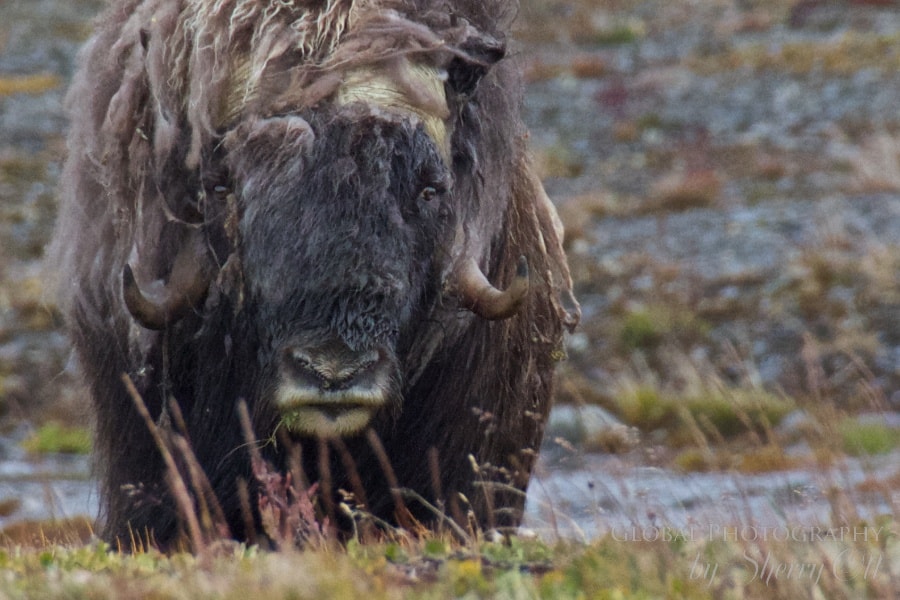
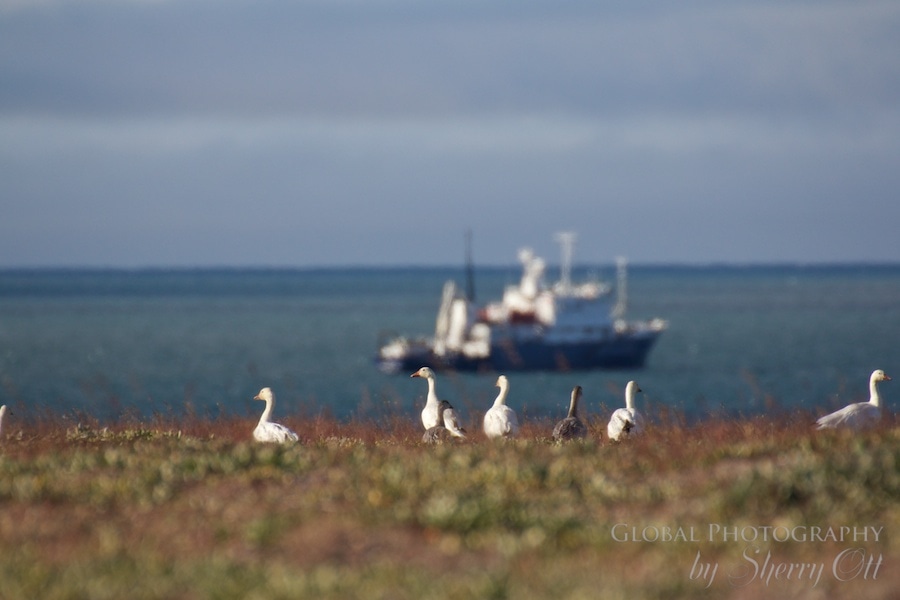
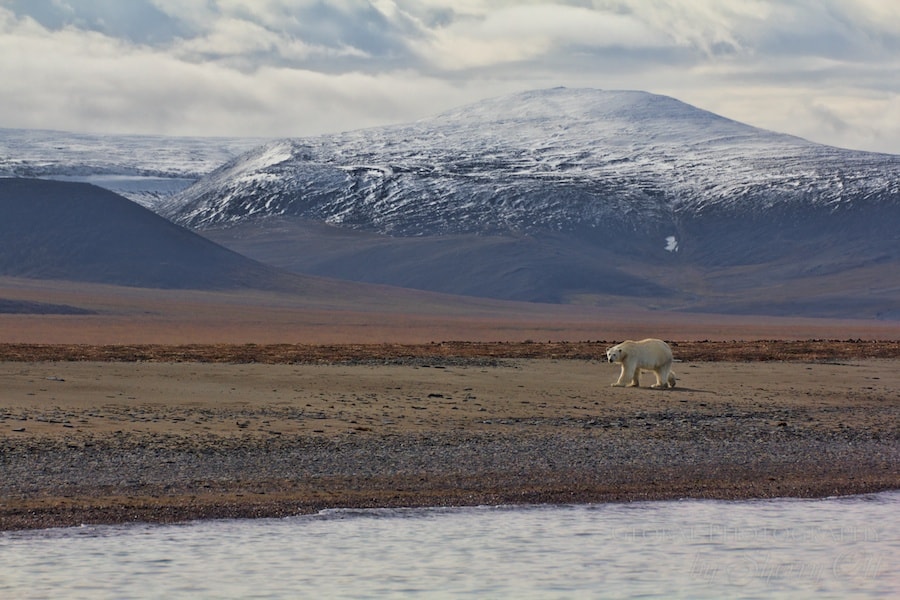
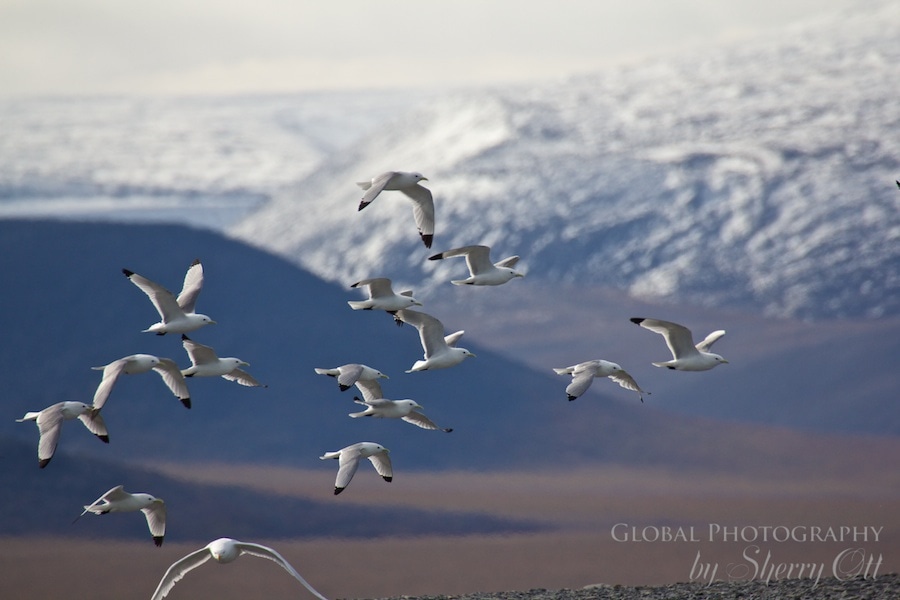
In addition to bears, the island has:
- 169+ bird species, including Snow Geese and the Snowy Owl
- Mammals including lemmings, arctic foxes, reindeer, muskoxen, wolverines, wolves, and polar bears
- Sea animals including ring seals, bearded seals, walruses, and 2 species of whales
Wrangel Island Plant Life
Glaciers did not cover Wrangel Island during the last Ice Age, therefore plant species have survived since the Pleistocene era; Wrangel Island has a wider variety of plants (417 species), including many rare species, than any other similarly-sized area of Arctic tundra.
Due to the extremely short summer, the Wrangel Island tundra is a carpet of flowers that all have to bud at the same time in a 2 or 3-week window. You won’t find a single tree or plant any taller than knee high on the island and most plants grow as vines close to the ground – even the willow trees.
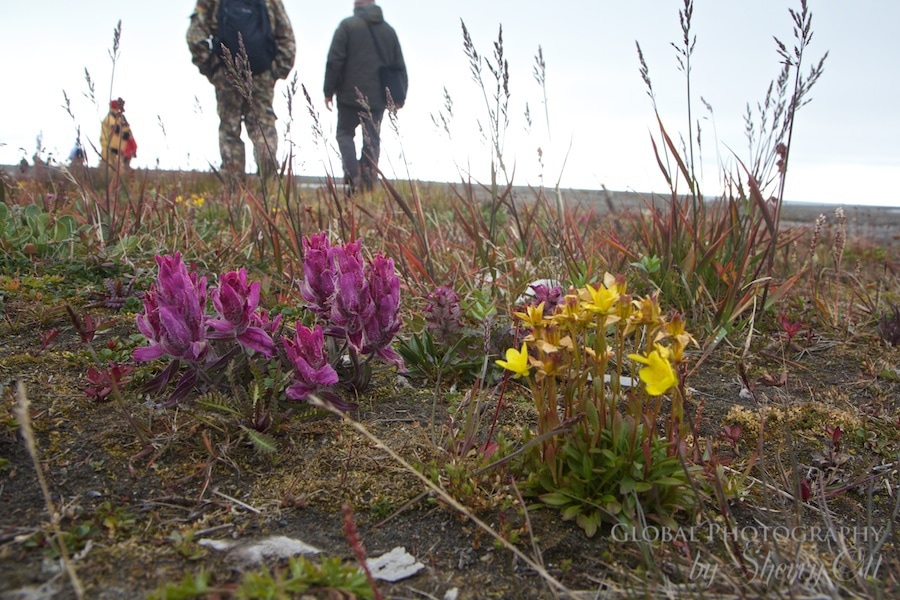
Wrangel Island Population
Does anyone live on Wrangel Island? There really is no real regular population on the island except the rangers who live in a few run-down buildings. There are 7 rangers who work/live in the Ranger department, and normally 3 to 4 of them stay through the winter. Ivan, the ranger we met, has spent 2 years and 2 winters on Wrangell Island, Russia so far.
Discover things to do in Antarctica that don’t involve wildlife
The main goal of the ranger program is to protect the territory from anyone who can disturb or damage the wildlife and nature on the island. They conduct ecological monitoring of the wildlife, support and maintain the field huts, and work with scientific groups, researchers, photographers, videographers, and tourist groups who visit the island.
In addition, they report on wildlife observations, clearing the reserve of rubbish (not a lot of progress on this), and the development of the infrastructure of the island huts.
Basically they live among a lot of old run down buildings in one of the most remote places in the world.
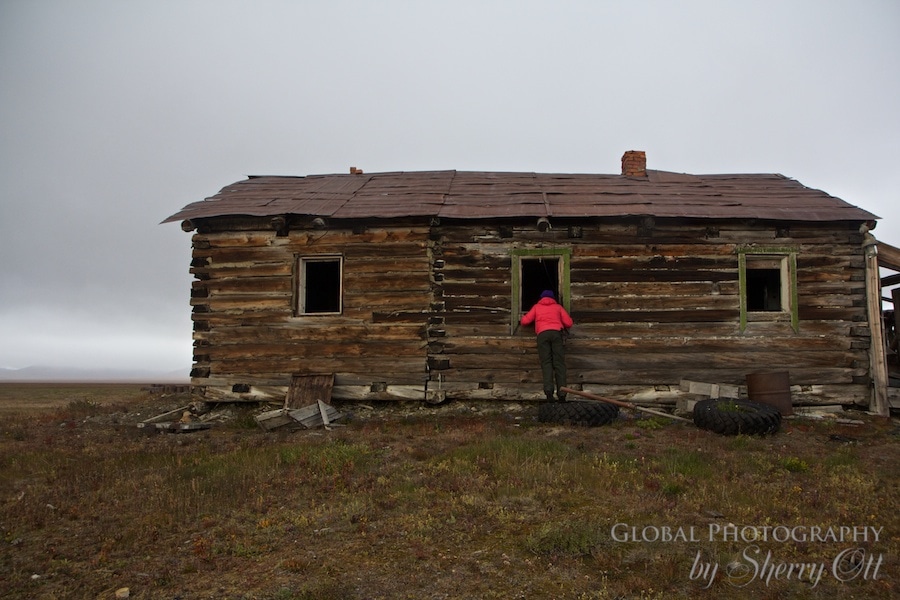
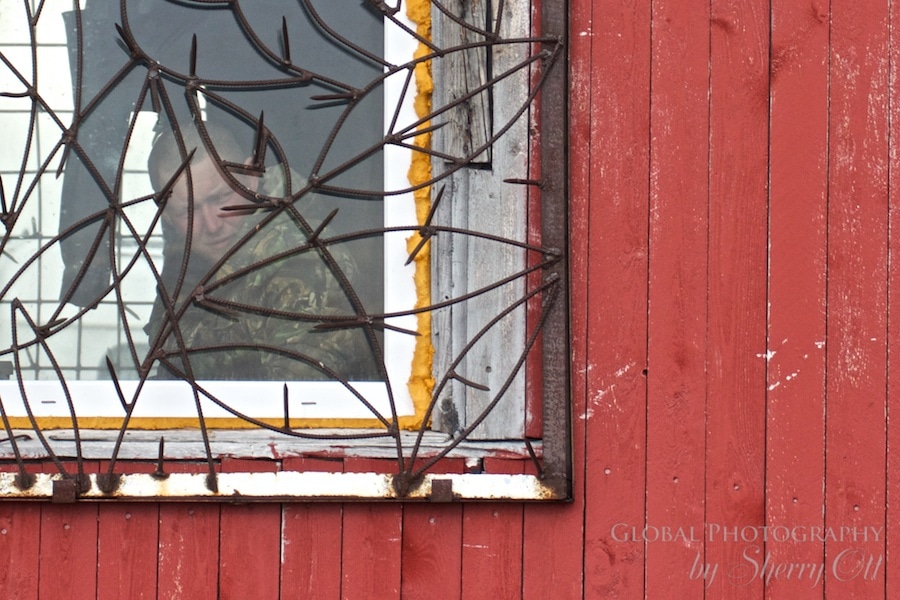
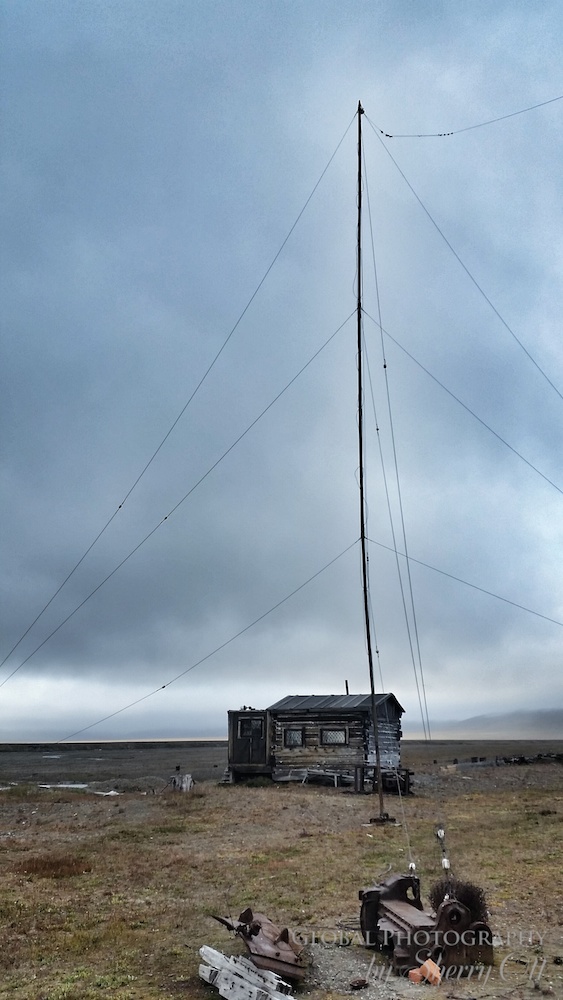
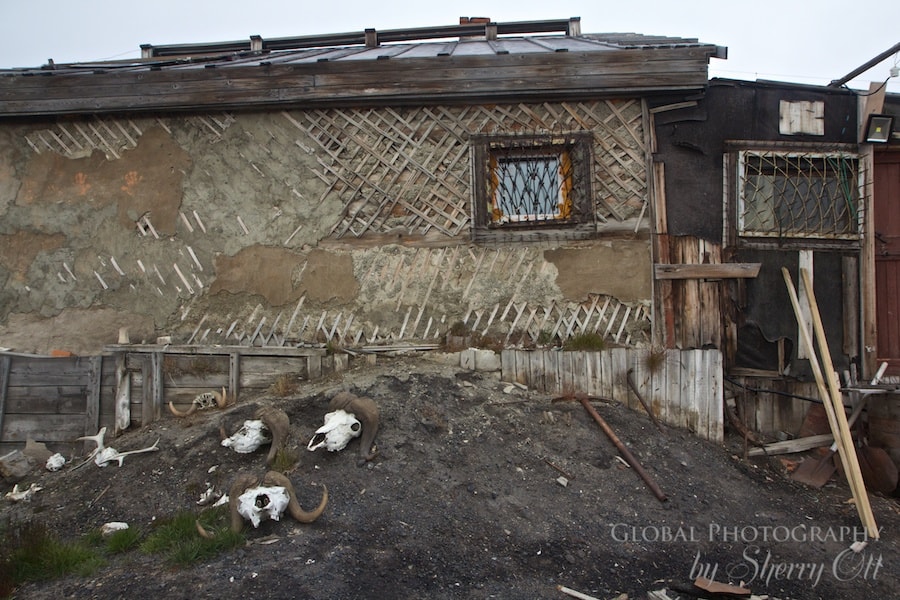
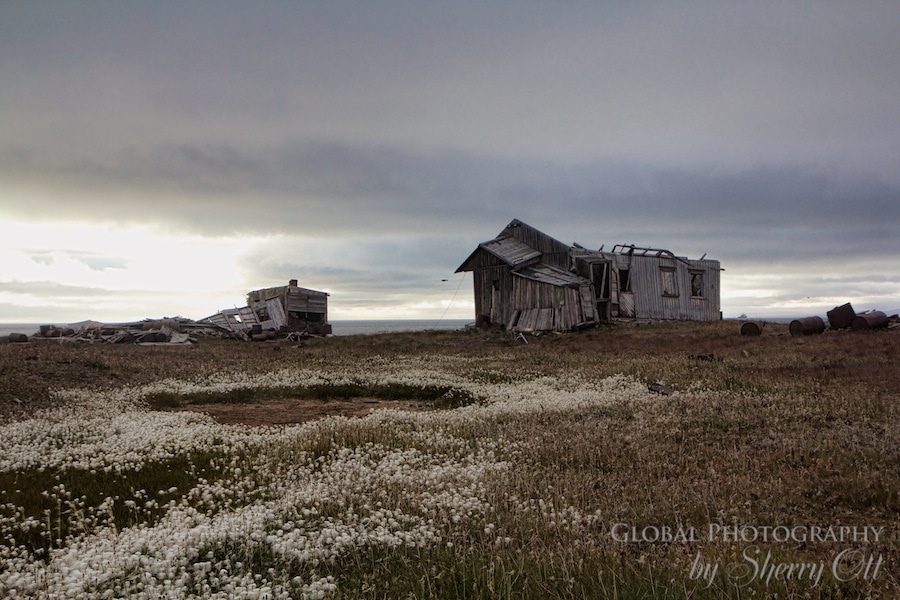
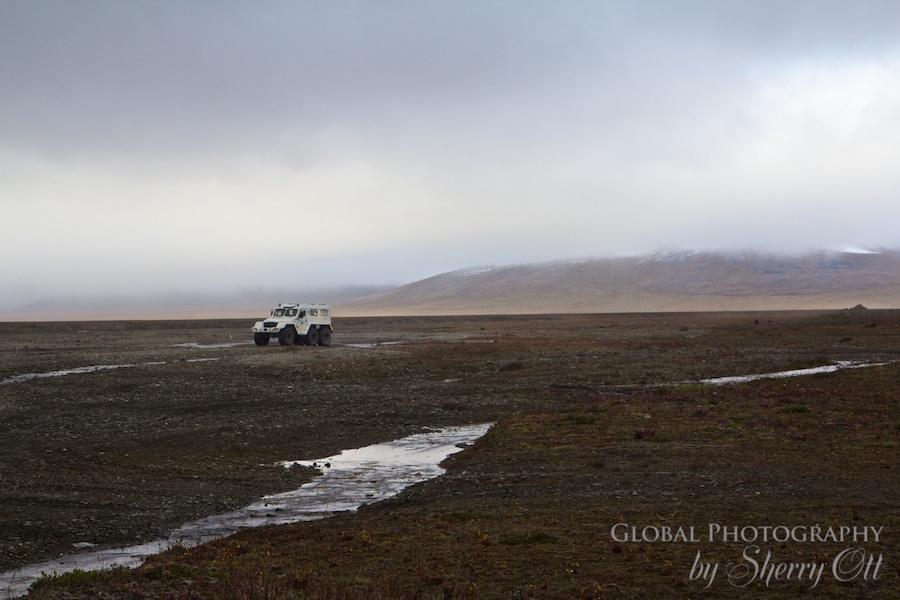
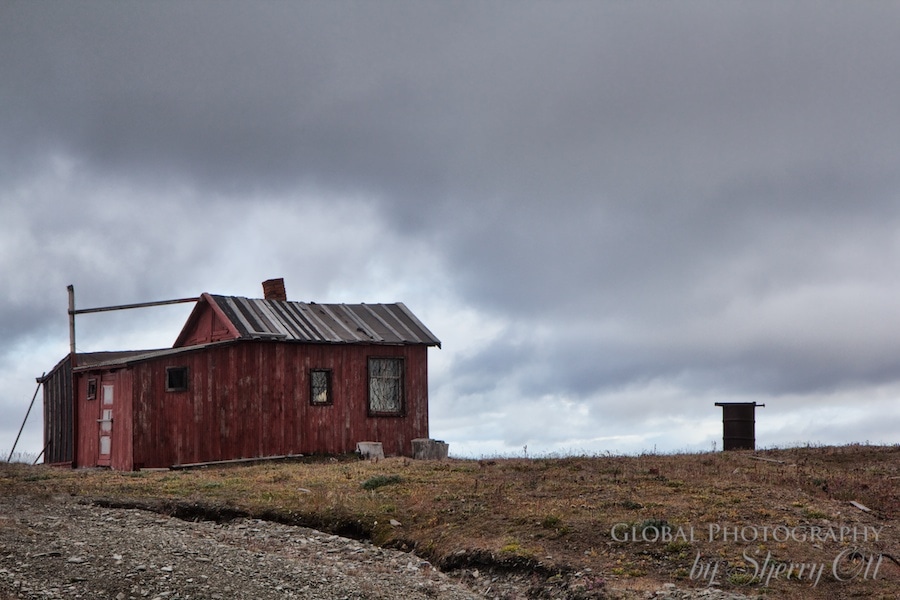
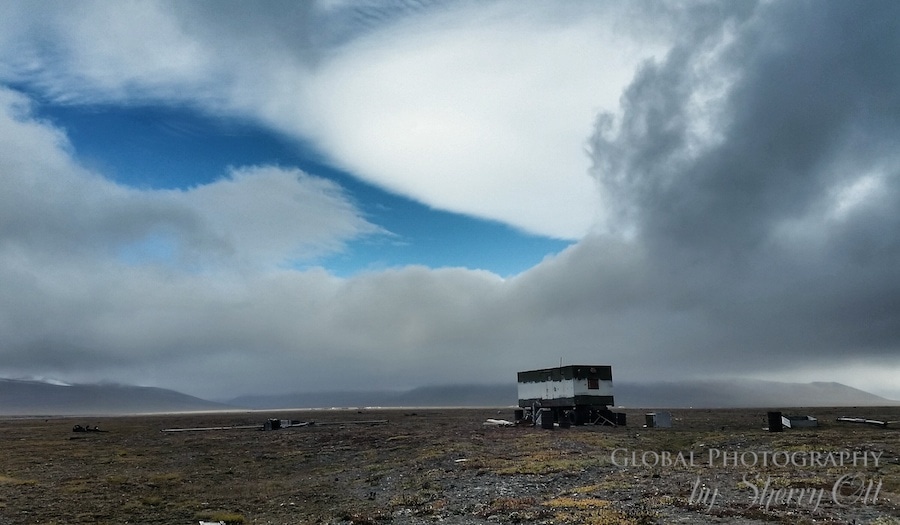
They patrol the territory via snowmobiles (super old Soviet snowmobiles) and in the summer they use quad bikes and special tundra vehicles. The rangers get food and fuel dropped off only once a year in the spring.
Meeting the Rangers
While we visited Wrangle Island via Heritage Expeditions, 3 rangers came on board our ship and stayed for 4 nights while we made our way around the island. They accompanied us on landings both for educational purposes and for safety purposes. They also showed us images of what life was like for them in the winter which was fascinating. Polar Bears get quite curious in the winter and many visit the ranger buildings quite often. I felt weird when we left them knowing that they had a long cold winter ahead.
Wrangel Island is a special land and if you ever get the chance to go there – do it!


